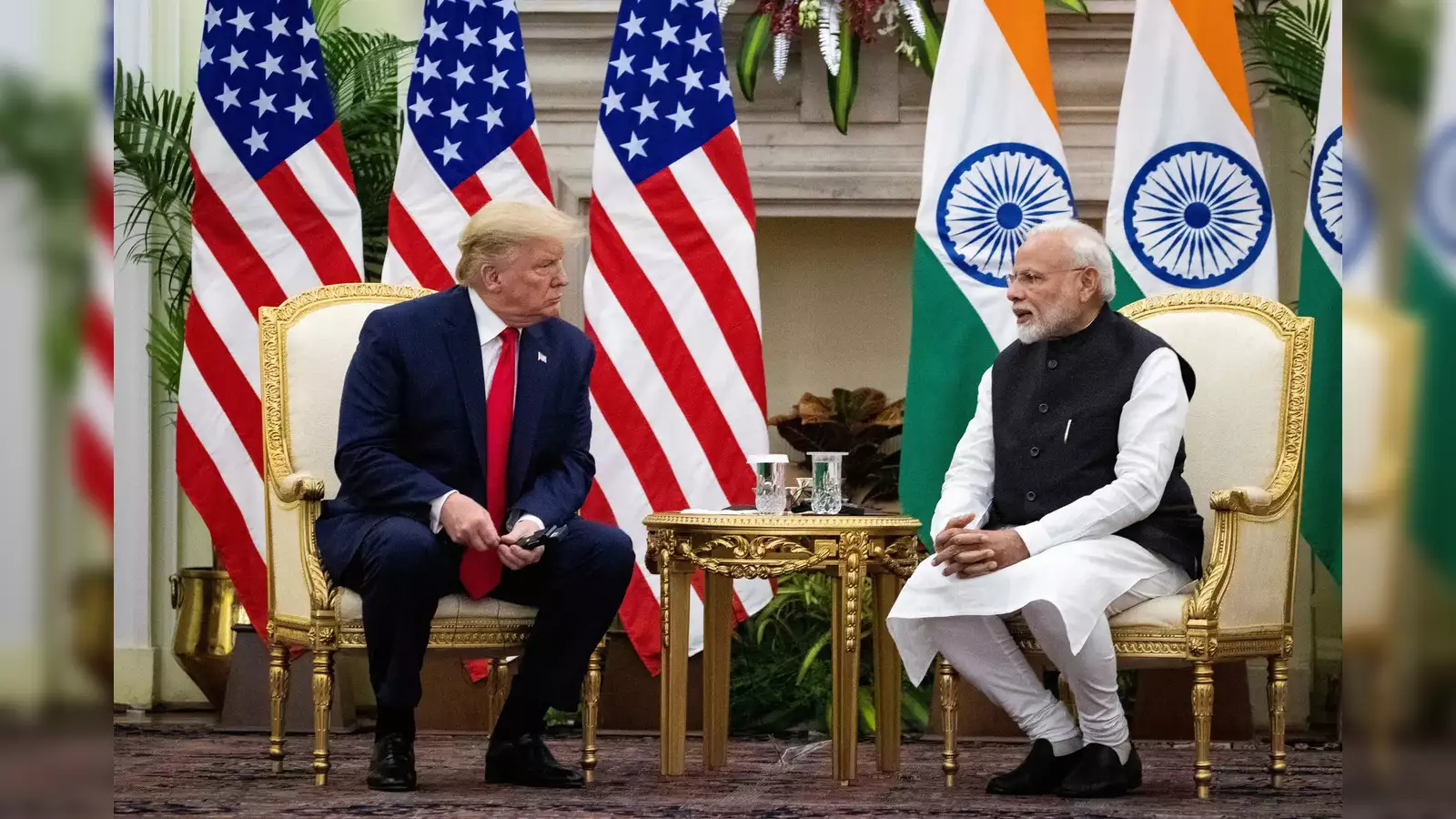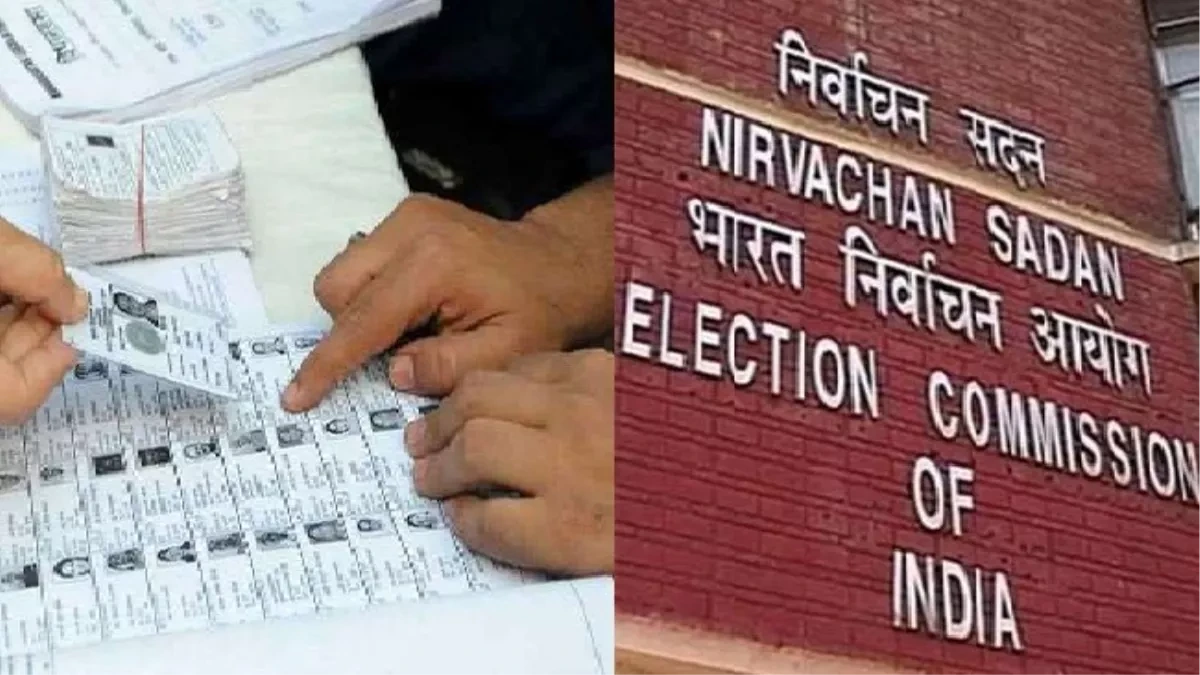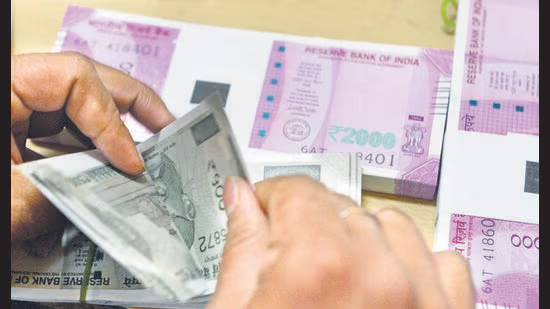- Courses
- GS Full Course 1 Year
- GS Full Course 2 Year
- GS Full Course 3 Year
- GS Full Course Till Selection
- Answer Alpha: Mains 2025 Mentorship
- MEP (Mains Enrichment Programme) Data, Facts
- Essay Target – 150+ Marks
- Online Program
- GS Recorded Course
- Polity
- Geography
- Economy
- Ancient, Medieval and Art & Culture AMAC
- Modern India, Post Independence & World History
- Environment
- Governance
- Science & Technology
- International Relations and Internal Security
- Disaster Management
- Ethics
- NCERT Current Affairs
- Indian Society and Social Issue
- NCERT- Science and Technology
- NCERT - Geography
- NCERT - Ancient History
- NCERT- World History
- NCERT Modern History
- CSAT
- 5 LAYERED ARJUNA Mentorship
- Public Administration Optional
- ABOUT US
- OUR TOPPERS
- TEST SERIES
- FREE STUDY MATERIAL
- VIDEOS
- CONTACT US
Reciprocal Tariffs and India Report -GTRI
Reciprocal Tariffs and India Report -GTRI

Introduction
In February 2025, the Trump administration introduced its Reciprocal Tariff Plan to address trade imbalances by imposing higher tariffs on countries with trade surpluses. With U.S.–India trade exceeding US$125 billion in 2024, Indian exporters now face significant risks. This report examines the tariff impact at various levels and provides strategic recommendations for both the government and industry.
About Global Trade Research Initiative (GTRI)
|
|
Details |
|
Established |
Founded in the early 2020s by Mr. Ajay Srivastava to offer independent, evidence-based trade insights. |
|
Mission/Objectives |
Deliver high-quality, jargon-free insights on trade, technology, and investment with a focus on development and poverty reduction. |
|
Role in Global Trade Policy |
Provides data-driven recommendations, evaluates tariff strategies and WTO rules, and guides decisions for governments and industries. |
|
Flagship Reports |
Publishes impactful analyses such as “Reciprocal Tariffs and India: Sectoral Impact & Neutralisation Strategies” and other in-depth trade studies. |
What are Reciprocal Tariffs?
|
|
Explanation |
|
Definition |
Reciprocal tariffs are tariffs imposed by one country in response to the tariffs or trade barriers imposed by another country. |
|
Purpose |
To counteract unfair trade practices and level the playing field between trading partners. |
|
Retaliatory Measure |
Acts as a response to high tariffs on domestic products, making imported goods less competitive. |
|
Negotiation Tool |
Encourages the opposing country to reduce its tariffs, fostering a balanced and reciprocal trade relationship. |
|
Protection of Domestic Industries |
Helps safeguard local industries by increasing the cost of imported products, boosting the competitiveness of domestic goods. |
|
Example |
If the U.S. imposes a 20% tariff on imported steel from Country X, Country X might retaliate by imposing a 20% tariff on U.S. automobiles. |
Key Findings of the Report
The report breaks down the tariff impact at multiple levels, offering insights into both country-wide and sector-specific differentials.
- Country-Level Tariff Differentials:
- Currently, Indian exports face an average tariff of 2.8% in the U.S., while U.S. goods entering India incur an average tariff of 7.7%
- A uniform tariff on all Indian exports would raise Indian export costs by 4.9 % impacting competitiveness.
- Sectoral Impact – Agriculture vs. Industry:
- Agricultural Products:
- Indian farm exports could face an additional tariff as high as 32.4% (from a current rate of 5.3% to 37.7% for U.S. farm products).
- Industrial Goods:
- Tariff differentials are lower at around 3.3%.
- Tariff differentials are lower at around 3.3%.
- Agricultural Products:
- Detailed Product-Level Analysis:
- The study further disaggregates products into specific tariff lines, revealing that some sectors, such as diamonds, gold & jewellery and automobiles, face much higher differentials—up to 23.1% for auto components.
- The study further disaggregates products into specific tariff lines, revealing that some sectors, such as diamonds, gold & jewellery and automobiles, face much higher differentials—up to 23.1% for auto components.
Impact Assessment of Tariff Changes
- Current vs. Proposed Tariff Rates:
- The difference between U.S. tariffs on its own imports and the lower tariffs on Indian exports is expected to widen if a uniform or sector-specific reciprocal tariff is imposed.
- This would increase the cost burden on Indian products in the U.S.
- Implications for Indian Exports and U.S. Imports:
- A higher tariff differential may reduce the competitiveness of Indian exports.
- Certain sectors, particularly those with high tariff gaps, could face a significant decline in market share in the U.S.
Sectoral Analysis: Vulnerable Industries
Agriculture: Risks for Farm Exports
- Seafood, Meat & Processed Food:
- Exports valued at US$2.58 billion could see a tariff increase of 27.83%.
- Dairy Products:
- With exports worth US$181.49 million, dairy items might incur a differential of 38.23%, impacting products like ghee and milk powder.
- Processed Foods & Edible Oils:
- Tariff increases ranging from 10.67% to 24.99% will likely affect pricing and competitiveness.
- Tariff increases ranging from 10.67% to 24.99% will likely affect pricing and competitiveness.
Industrial Goods: Challenges for Key Sectors
- Pharmaceuticals:
- Representing US$12.72 billion in exports, a 10.9% tariff differential could drive up costs for generic medicines and speciality drugs.
- Diamonds, Gold & Silver:
- A differential of 13.32% may negatively impact the competitive edge of Indian jewellery in the U.S.
- Electronics & Electrical Products:
- A 7.24% gap poses challenges for high-tech exports.
- Automobiles:
- With a 23.1% tariff differential, Indian vehicles and auto components may struggle to compete in the U.S. market.
- With a 23.1% tariff differential, Indian vehicles and auto components may struggle to compete in the U.S. market.
Sectoral Tariff Differentials (Ranked by Differential)
|
Sector |
USA Tariff on Indian Exports (%) |
USA Tariff on Imports from India (%) |
Differential (%) |
|
Agriculture, Meat & Processed Food |
5.29 |
37.66 |
32.37 |
|
Automobiles |
1.05 |
24.14 |
23.10 |
|
Diamonds, Gold & Jewellery |
2.12 |
15.45 |
13.32 |
|
Chemicals & Pharmaceuticals |
1.06 |
9.68 |
8.63 |
|
Electrical, Telecom & Electronics |
0.41 |
7.64 |
7.24 |
|
Machinery & Computers |
1.30 |
6.60 |
5.29 |
|
Plastics & Articles |
4.38 |
9.95 |
5.56 |
|
Iron, Steel & Base Metals |
2.06 |
4.54 |
2.48 |
|
Textile & Clothing |
8.99 |
10.37 |
1.37 |
|
Ores, Minerals & Petroleum |
6.67 |
2.31 |
-4.36 |
Strategic Recommendations for Neutralisation:
Government Actions
- Advance Tariff Offer & Zero-for-Zero Strategy:
- Propose eliminating tariffs on 90% of industrial goods in a reciprocal move to counter U.S. measures.
- This strategy, while challenging WTO MFN rules, may be preferable to entering into a full FTA with onerous concessions.
- Data Reconciliation:
- Address discrepancies between Indian and U.S. trade data (e.g., DGCI&S vs. U.S. figures) to base negotiations on accurate, reliable information.
- Highlight Misreported U.S. Data:
- Correct inaccuracies such as the claim of a 100% tariff on Harley-Davidson motorcycles (actual rate now 30%) to prevent inflated tariff justifications.
- Evaluate U.S. NAV Tariffs:
- Convert non-ad valorem (NAV) tariffs to ad valorem equivalents for a transparent discussion, since the U.S. applies NAV tariffs on more products, inflating effective rates.
Industry Measures:
- Cost Reduction & Efficiency:
- Sectors like automobiles, pharmaceuticals, electronics, and textiles should invest in strategies to lower production costs and improve efficiencies.
- Market Diversification:
- Expand exports to regions with more favorable tariff regimes, such as Europe, Southeast Asia, and Africa.
- Local Sourcing & Joint Ventures:
- Consider setting up assembly units in the U.S. or forming joint ventures with American firms to bypass tariff barriers.
- Proactive Engagement:
- Industry associations should coordinate with the government and conduct training sessions on tariff classifications and regulatory updates to adapt swiftly to the evolving landscape.
- Industry associations should coordinate with the government and conduct training sessions on tariff classifications and regulatory updates to adapt swiftly to the evolving landscape.
Conclusion
The Reciprocal Tariff Plan introduces significant challenges for Indian exporters—particularly in agriculture and key industrial sectors. By adopting strategies such as a zero-for-zero approach, reconciling trade data, and implementing cost-efficiency measures, India can better safeguard its trade interests and maintain competitiveness in the U.S. market.
Key Import Taxes in India
|
Tax Type |
Example |
Impact / Explanation |
|
Customs Duty (Basic) |
Basic duty ranging from 5–30% of product value |
Forms the base import tax, increasing the overall cost of imported goods by a percentage of their value. |
|
Ad Valorem Duty |
Example: 10–20% on electronics or textiles |
Levied as a percentage of the declared value, raising the cost proportionally to the product’s price. |
|
NAV Duty |
Fixed rate per kilogram/liter (e.g., ₹X per kg/liter) |
Adds a fixed charge independent of the product's value, significantly impacting low-value, high-volume imports. |
|
GST |
18% GST on imports (varies by category) |
A comprehensive tax applied at the point of import, integrating with domestic tax systems and affecting retail prices. |
|
Excise Duty |
12–28% on selected goods (e.g., alcohol) |
Primarily imposed on domestically produced goods, but sometimes applied to imports in specific categories. |
|
Countervailing Duty |
Typically 15–25% on subsidized imports |
Neutralizes foreign subsidies to ensure a level playing field for domestic producers. |
|
Safeguard Duty |
Temporary duty of around 20–30% during surges |
Imposed during sudden import surges to protect domestic industries from market disruptions. |
|
Also Read |
|
UPSC Foundation Course |
|
| UPSC Monthly Magazine | CSAT Foundation Course |



